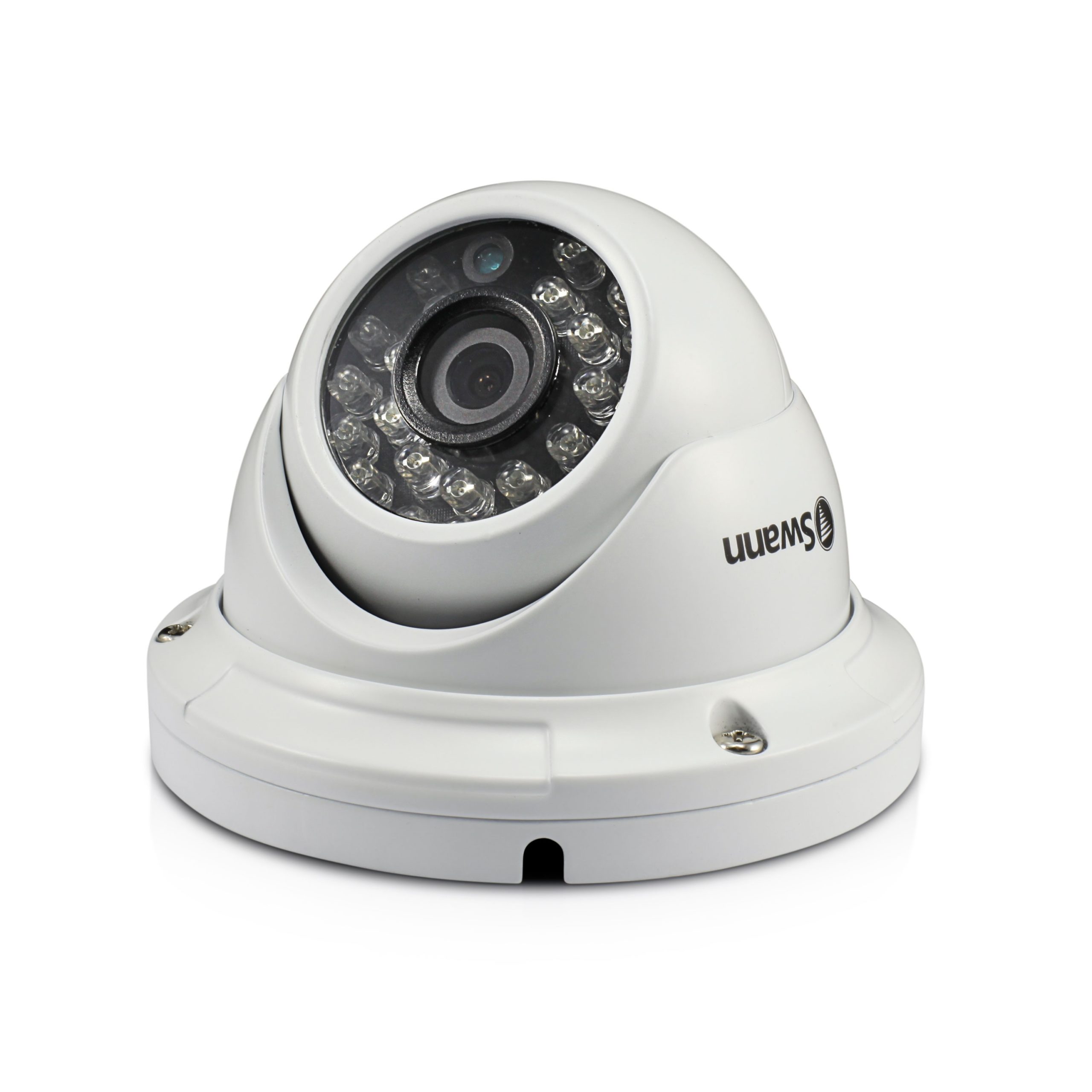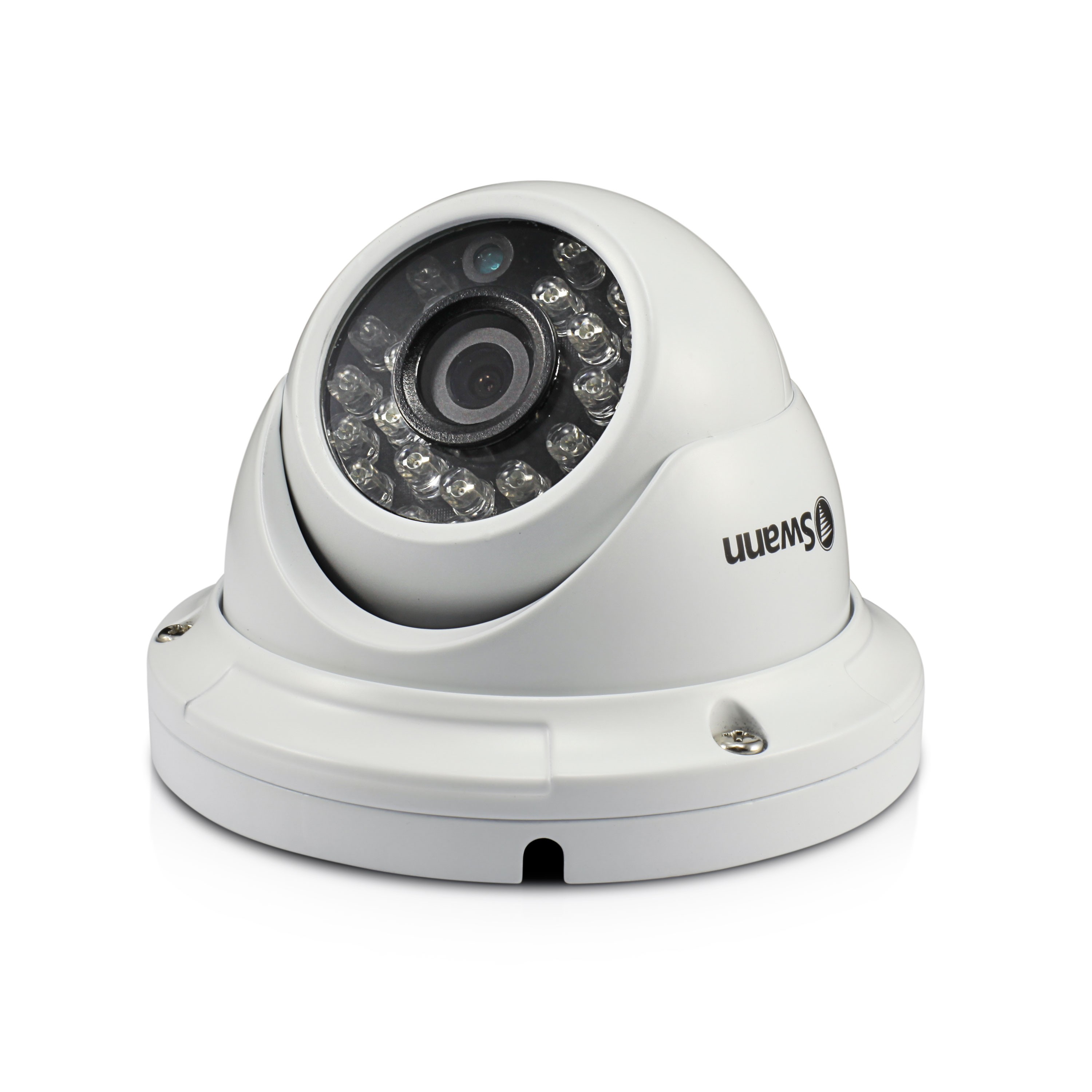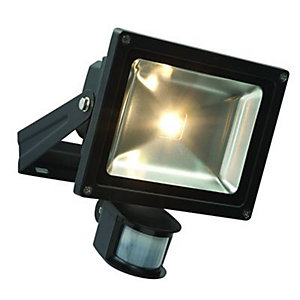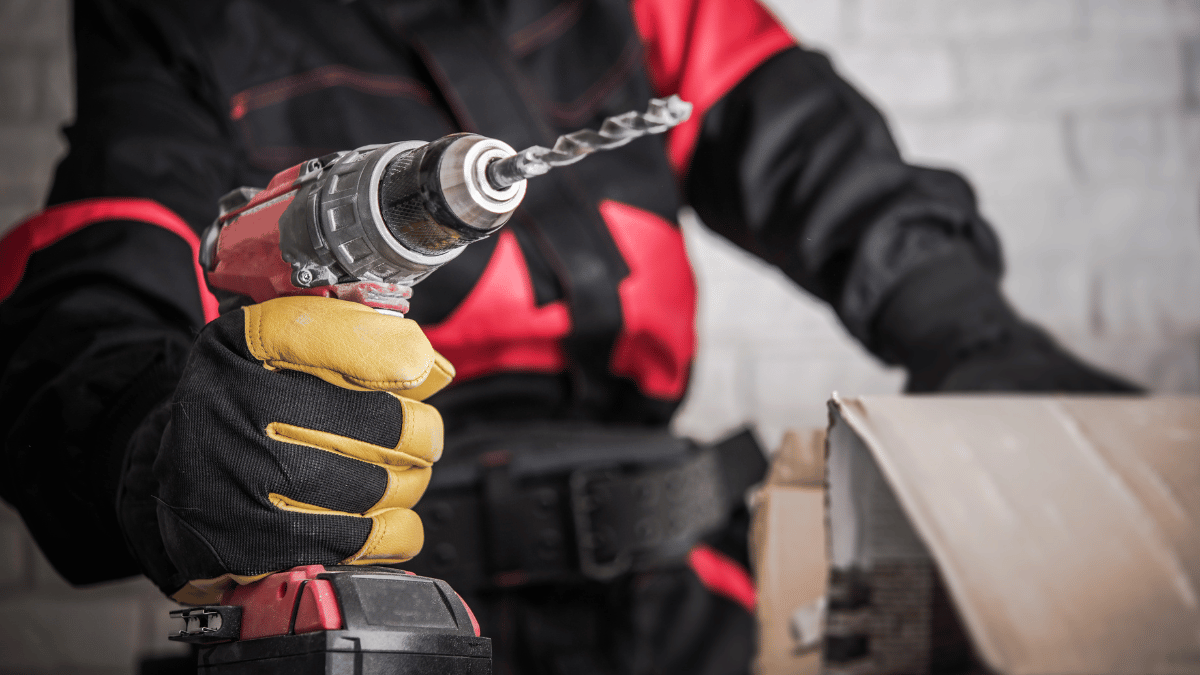The theft of fixed assets is a multifaceted security challenge that different types of organizations have to confront day to day. From medical devices in hospitals and computers in schools or business premises to bulldozers on construction sites and inventories in warehouses—there is the need to implement technical, physical, and logical antitheft measures to prevent the loss of expensive and business-critical tools. While each unique asset security strategy has its inherent characteristics and benefits, a comprehensive solution supports these four functions:
- Deterrence: Discourages theft
- Detection: Detects and records security breaches or incidences within a building, facility, or site
- Tracking: Locates fixed assets remotely or within a facility or job site
- Reaction: Facilitates responses to intrusion or theft
A thorough risk assessment should inform the choice and combination of mitigation strategies and systems that an organization should deploy to protect its fixed assets against theft. Here is a list detailing best practices for securing business equipment, devices, or tools across various industries:
In this article...
 1. Video Surveillance
1. Video Surveillance
Video surveillance is a first-line anti-theft solution with a broad array of commercial and industrial applications, including construction sites, material yards, factories, business premises, warehouses, and government buildings. It achieves deterrence by making a visual statement to potential thieves that somebody is watching them, and it may help with arrests as well as asset recovery efforts based on the recorded footage of security breaches.
The cost of a video surveillance system depends on factors such as type and number of cameras required. For example, a 15-camera configuration may cost between $10,000 and $15,000. Typically, IP cams cost more than analog ones because of their capacity to transmit footage to the cloud or mobile apps. Also, high-resolution cams, such as 720p and 1080p systems, are more expensive, but they capture high-quality video. Other surveillance camera features that impact costs and capabilities are:
- Low-light vision: Infrared cameras can “see” in the dark.
- Pan-tilt-zoom: PTZ cameras allow users to adjust the field and angle of vision, remotely. Each may cost $500 or more.
- Audio: Some surveillance cameras pick sound along with video
- Field of view (FOV): The smaller a camera lens is, the wider its FOV is. This Swann dome camera with a 93-degree angle of view costs $150.
A video surveillance system should cover as much ground as possible, including exits and entrances to facilities or offices, storage areas, and work floors, to maximize asset security.
2. Motion Detection and Alarm Systems
Motion detection and alarm systems are usually part of a comprehensive commercial security package that includes video surveillance, and they can help stop burglary attempts. When they detect intrusion, they produce flashing lights or laud, extended warning sounds, which may force intruders to abandon their criminal plans and flee for fear of exposure or getting caught. These systems may send security alerts to monitoring centers or law enforcement officers, enabling on-call response teams to act promptly.
Motion sensors help to save time, energy, and efforts because they only sound the alarm, or activate video camera recording when they have detected the movement of a car or person. As such, they are suitable for protecting assets in remote locations, restricted areas, and unguarded spaces, such as corridors and production lines.
The cost of each sensor depends on the model and type. For example, this Honeywell’s passive infrared motion sensor costs roughly $50. Multiple detectors may be required to cover large open-plan spaces, such as warehouse storage areas and classrooms.
3. Physical Access Control Systems (ACS)
Physical access control systems are ideal for fixed asset security as they can incorporate electronic/digital identity management mechanisms or token-based access to let only authorized personnel into specific areas or rooms within a facility or building. These systems may also connect to central databases via the cloud, internet, or corporate Local Area Networks (LANs) for administrative purposes, for example, modification of credentials and management of schedules and users. They provide an accurate and up-to-date account of employees on site or people that have accessed “privileged areas,” such as storerooms.
With physical access control, an organization can deter burglary, such as when a would-be intruder backs off after encountering a digital card reader, rather than an easily breached lock. It may also incorporate an alarm system to track unauthorized access attempts. If an authorized employee enters a protected area and steals something, the ACS can provide a list of suspects.
There are three main types of physical access control systems that a business may install on buildings and rooms that house expensive fixed assets. These are:
Keypad ACS
With a keypad access control system, a user must push a correct sequence of numbers to open a door. Mostly, the device operates electronically, and it has a built-in microprocessor for decoding the key that the user enters. A basic system with just one keypad may cost $300 to $500. More sophisticated door security products have a smart card verification component, with their price ranging from $1,500 to $2,000 per door. A commercial-grade system comes with software license fees and initial installation costs.
Portable-Key ACS
A portable-key ACS involves the use of a digital identification card to permit entry. The wallet-sized card contains a prerecorded code, and a user swipes it through or slides it into a card-reader slot to process their security credentials. It may cost between $1,500 and $2,500 to set up a commercial-grade portable-card ACS for about 100 or so employees. Each card may cost about $5, while service fees range from $10 to $100 per month.
Biometric ACS
Biometric access control systems allow or deny entry based on each user’s unique physical or biological attributes. Advanced versions of these systems may cost $10,000 or more per door. Examples include:
- Fingerprint scanners: These devices capture the unique patterns on a user’s finger, and they use pattern-matching analytics to compare the captured data against prerecorded fingerprints. A successful match verifies the user’s identity, thereby unlocking the access point.
- Hand geometry readers: These are common in industrial and commercial physical access applications. They generate and preserve digital biometric templates of personnel based on multi-dimensional measurements of their hands. Later on, this information forms the basis for verifying each employee’s identity before granting them access.
 4. Security Lighting
4. Security Lighting
Darkness and poor lighting are top enablers of intrusion and theft of physical assets. However, security lights can discourage intruders from entering a guarded site or facility without permission, and they make work easier for patrolling guards at night. Adequate illumination of any compound or space for optimal security depends on several factors, including:
Lighting Controls
An energy management system should be in place to guarantee sufficient lighting at all pertinent times. For example, it may incorporate a photoelectric cell control and a time clock to turn lights on and off, as well as regulate the intensity of illumination, depending on the presence of daylight. Similarly, dusk-to-dawn lights should remain on throughout the night to optimize site security.
On the other hand, motion-detecting lighting systems switch on to illuminate an area only after detecting movement or vibration. They are ideal for covert deployment, especially along with video surveillance equipment.
Types of Fixtures
Exterior lighting fixtures are available in different forms to meet various industrial and commercial security needs. For instance, high-wattage, pole-mounted luminaries are perfect for large sites that need illumination to improve the safety of physical property, while surface-mounted lights are excellent on building facades. Other options are floodlights and bollards.
The cost of a security lighting system depends on the number and type of luminaries used, with a motion sensor light priced at roughly $100 depending on the number of heads and features, such as smart technology.
5. Plant/Vehicle Immobilizers
An immobilizer makes its difficult (if not impossible) to move a machine, for example, a backhoe or an excavator, from its location. While secure physical storage is the best strategy for protecting plant and vehicles from theft, immobilizers can help in spaces where it is impossible to set up perimeter hoarding, such as around road construction sites. Some equipment comes with built-in engine immobilizers, while other machines require retrofitting with after-market solutions.
Some plant-immobilizing systems activate automatically once the engine turns off, while the more advanced versions need a unique key to deactivate. It is possible to control these anti-theft devices remotely via GPS/GSM networks and mobile phones. Owners or contractors should research or consult with experts to acquire the right retrofit immobilizers for the operating conditions of their equipment.
Other plant immobilization techniques include careful positioning of vehicles on site and the use of physical security such as clamps and chains. Also, there are hydraulic systems for immobilizing hydraulically-operated machines.
A standard vehicle immobilizer may cost $100 or less, but service providers also charge installation and mobile app fees.
6. Asset Trackers
Sometimes, intruders or ill-intentioned company insiders may breach physical access control systems to make away with portable, tangible assets, such as office supplies, computers, or medical devices. A thief may steal small construction equipment like a generator or mini-excavator by merely loading it onto a truck or hauling it away. Tracking technology can help an organization to monitor the movement of such assets anywhere to deter theft.
There are various ways to implement asset tracking systems, with some of the most effective techniques incorporating GPS or GSM technology to determine and transmit the geospatial data of tagged equipment, devices, or inventories in near real time. These trackers are usually available as part of a cloud-based asset management solution. In such a case, an employee uses a smartphone to scan a barcode or quick response (QR) label on a tagged device to ID it and read its location information.
Asset tracking solution features and capabilities differ from provider to provider. While some can remotely switch off a system, others allow geo-fencing and are programmed to send alerts to site security personnel if someone operates tagged equipment beyond working hours or moves a machine outside a preset boundary.
Using a GPS asset tracking solution may cost anything from $20 to $200 per month based on supported functions. There is usually no need to buy barcode scanners because smartphones do the job just fine.
7. Physical Security
Organizations should put in place physical measures that make it difficult for would-be thieves to access their facilities and areas that house expensive equipment. Such provisions can supplement other building security systems. Examples include:
Entrances, Gates, and Barriers
A security gate prevents unauthorized vehicles and people from entering restricted areas. It has a wide array of commercial/industrial applications, including schools, factories, and municipal authorities. Such an entrance is usually guarded or integrated with an electronic access control system such as intercom, biometric identification, smart cards, and PIN codes. It locks and unlocks electronically, offering keyless entry, and denying access to individuals without relevant credentials.
There are different types of commercial-grade security gate systems, which vary in costs depending on supported features. When considering an automatic sliding or swing gate, it is essential to take into account the price of its electrically-powered opener, which ranges from a few hundred dollars to several thousand dollars. For example, this LiftMaster swing gate opener has a $2,136 price tag.
Vehicle control barriers can reinforce the physical security of buildings and sites. However, it is essential that these installations meet relevant impact test standards, for example, International Workshop Agreements (IWA 14-1 and 14-2) and ASTM F 2656. An automatic traffic control barrier may cost between $1,000 to $4,000 or more.
Storing Small, Portable Items
Heavy-duty, steel vaults with protected padlocks or electronic lock mechanisms are suitable for storing small items like computers and hand-held power tools, such as electric drills. These equipment storage systems cost from a few hundred dollars to $1,000 or more. Most models have holes for screwing to a permanent surface (to make their removal difficult), while others feature fork skids for enhanced mobility.
Steel security cabinets are popular in corporate offices, where they safely store small electronic devices, such as tablets and laptops, when not in use. With their electric locking and keypad access control systems, these vaults are difficult to breach. They cost between $100 and $500 per unit.
In Summary
The theft of fixed assets affects all industries, from education and healthcare to manufacturing and construction. But there are modern strategies for securely storing small as well as large equipment and devices. These solutions include:
- Physical storage and barriers
- Asset tracking
- Surveillance systems
- Motion detection and alarm systems
- Access control systems
- Immobilizers
- Security lighting
At GoCodes, we’re experts in fixed asset security technologies, especially GPS tracking. Contact us to explore more about securing your mission-critical equipment!


 1. Video Surveillance
1. Video Surveillance
 4. Security Lighting
4. Security Lighting

